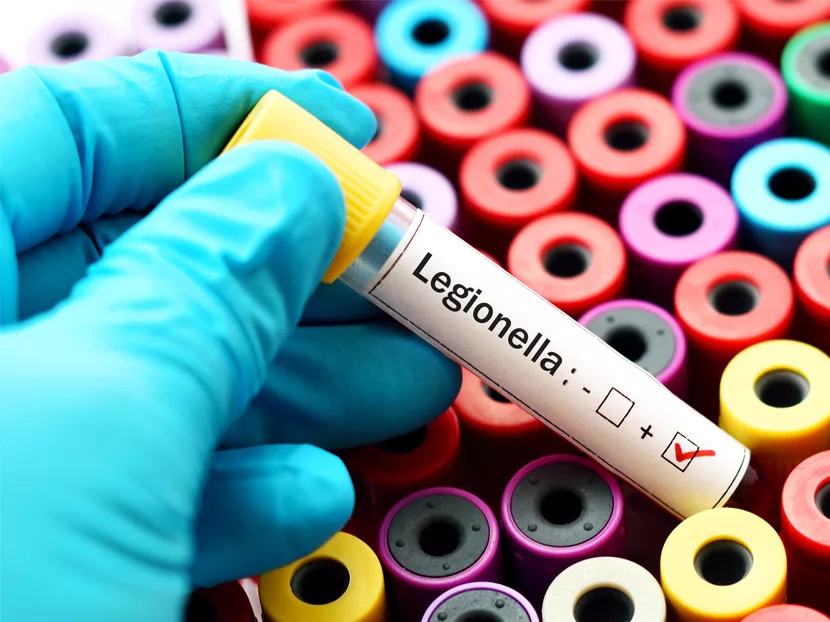In April, our senior design class went completely virtual at the Milwaukee School of Engineering. Not an ideal way to end my first year of teaching, but I’m learning that resiliency can be one of our best assets in this country. There was an interesting development during one of my Zoom discussions toward the end of the senior project: one of my students was interested in getting my insight on his master’s capstone project.
Logan Stone, a senior researching industry-relevant issues, came to me with the idea of doing his project on Legionella. The research question that Logan, his professor Doug Nelson and I came up with is, “How should the plumbing industry balance safety and sustainability in the use of chlorine disinfection for Legionella mitigation, and how does it compare to mitigation by thermal control?”
We talked for over an hour on the reason his question is so relevant. We discussed how plumbing engineers have some extremely tough challenges to consider when designing a safe and sustainable domestic water plumbing system. I’ve agreed to help Logan for the year on this research and use this platform to solicit industry help for his capstone content.
Some background on Logan: He is an architectural engineering major with a focus on mechanical systems. He lives in Oconomowoc, Wis., and is currently entering his fifth year to receive his master’s degree in architectural engineering.
His background includes three internships: his first was performing takeoffs for an HVAC equipment supplier; another was as a plumbing estimator for a local contractor; and the most recent was for plumbing design in a consulting firm. Logan has a passion for sustainability and wants to practice plumbing engineering after college.
During the conversation with Logan, we talked about the cause and effect of how we design and manage domestic water systems. We talked about how designing these systems can be a fascinating experience that takes you from public safety to sustainability, to cost management and innovation. These are the drivers of our industry, pushing and pulling on plumbing engineers during their design.
When Logan came to me wanting to research the disinfection methods of Legionella in plumbing systems, I knew there were a handful of paths we could go down regarding this topic. He has a strong interest in environmental stewardship, so we landed on the balance of sustainability and safety in the design of chlorine versus thermal disinfection for Legionella in the domestic water system.
When thinking about his research question, we decided that disinfection strategies will be Logan’s focus; however, we can’t forget about the entire system as ASHRAE 188 has preached to us. We want the research to include a background in the design of our plumbing systems.
Particular topics will be national and local codes, pipe sizing, water heater design, hot water temperatures, recirculation strategies, fixture design, building water features, building occupancy and utility water quality. They all affect Legionella mitigation and will play into the research around disinfection methods.
Industry Input
Our industry is learning information about Legionella mitigation and management every day. With this in mind, we wanted to open this research up to the industry to create an integrated capstone team representing all appropriate backgrounds — engineers, contractors, building owners, scientists and suppliers. These are all people with unique experiences who we would like to listen to, understand and incorporate their ideas.
We are looking for people interested in research, safety, sustainability and the willingness to pursue unbiased data.
Logan had the idea of analyzing a smaller-scale project, maybe a clinic or senior living home he could use for direct design analysis. The basic idea is that Logan would formulate his hot water system design using thermal control to limit Legionella and then design it with chlorine disinfection for comparison.
At the project’s end, the goal would be to compare safety, sustainability and cost in a life cycle cost analysis. We are likely going to use a facility that has already been designed so Logan can have half of his design validated with real-world data. I think this is a fantastic idea and am excited to see the progress.
Based on this excitement, Logan and I thought we would share our progress, wins, shortcomings, and eventual conclusions with Plumbing Engineering magazine and you, its readers. Once our first draft is completed, we plan to publish some updates here and keep you in the loop. For those who are interested, please reach out to Logan directly with your background and we will be in touch. Logan’s email address is [email protected].
School started for our children this week and MSOE is mostly in-person this quarter. As we begin the school year, I can only hope that you and your families are safe and maybe back to simpler times. If you can’t participate in this research project, I’m hoping you can get involved with something to take your mind off the last eight months.





